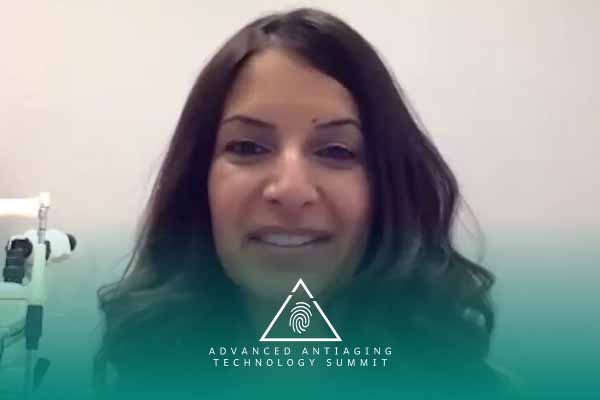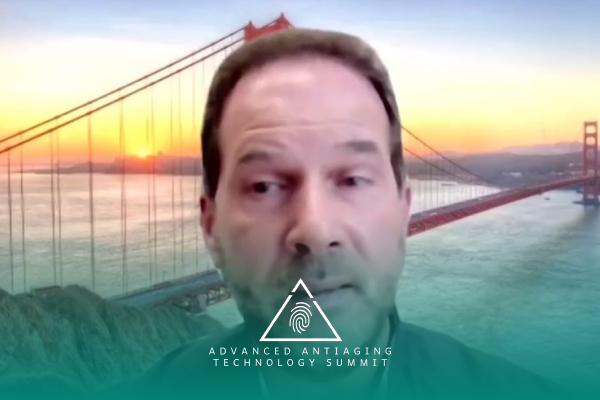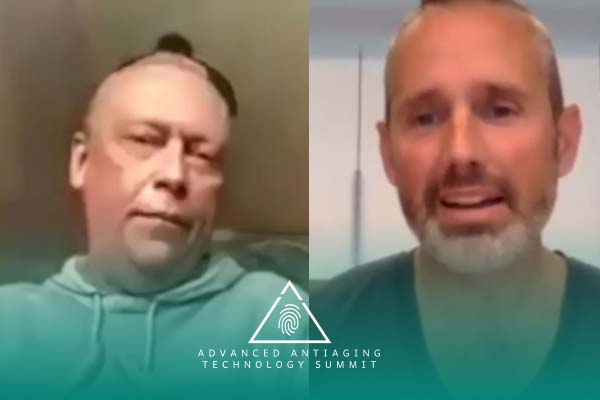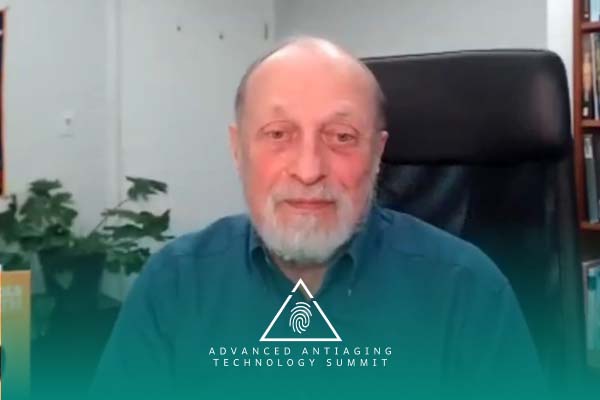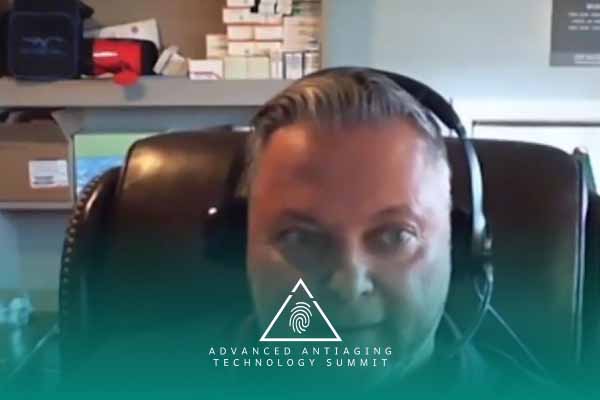Join the discussion below
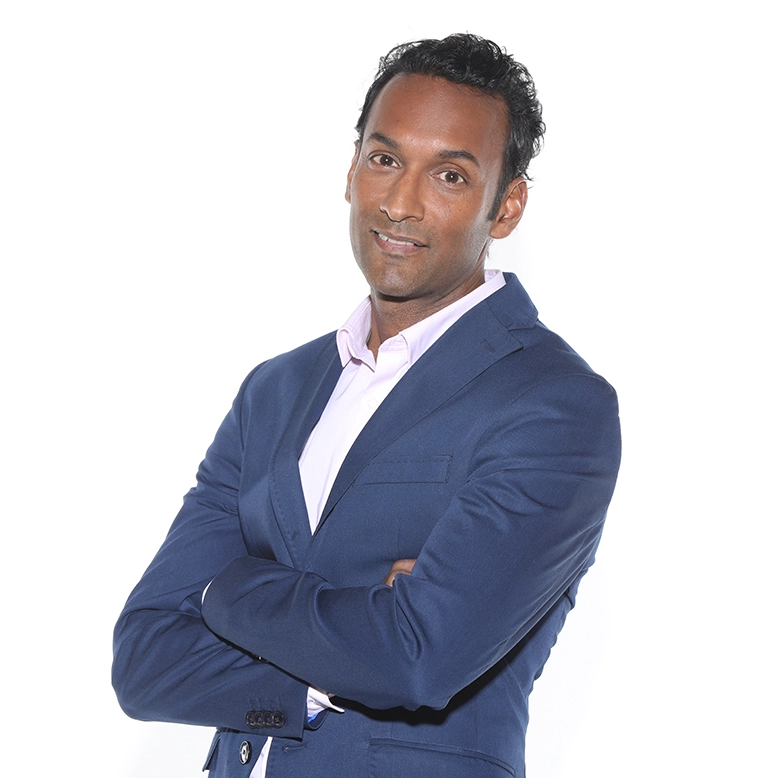
Dr. Goel is a medical physician and founder of Peak Human Labs. His mission is to speak knowledge of the latest cutting edge medical tools and science in order more people to live in a Peak mental, physical and spiritual state. You can learn more about his work at longevity.peakhuman.ca. Read More

Dr. Ramesh purchased Vision Care Centre in 2007 and infused her energy into all of VCC. She lives her life based on four main values: love, connection, inspiration, and empowerment. She connects with patients to better understand their goals, connects with industry leaders to better support her goals, and inspires... Read More
Sanjeev Goel, MD, FCFP (PC), CAFCI
Hi, everyone. I’m Dr. Sanjeev Goel, and you’re listening to the to the Advanced Antiaging and Technology Summit. Today, my guest is Dr. Kiran Ramesh. Kiran Ramesh is a optometrist who purchased the Vision Care Center in 2007 and fused her energy into all of Vision Care Center. She lives her life based on four main values, love, connection, inspiration, and empowerment. She connects with patients to better understand these goals, and connects with industry leaders to better support her goals. During school, Dr. Kiran Ramesh struggled with paying attention, focusing, and headaches, until she discovered neuro-visual training.
It’s changed her life and the lives of her patients. She was trained by world-renowned speakers in vision therapy, and now close friends, Dr. Robert Sanet, Robin Lewis, and Stefan Collier. She trains and supports patients that struggle with reading, learning, and those who have suffered a concussion. Dr. Ramesh is a proud recipient of the 2019 Canada Best Eyecare Practices of the Year. She completed her Doctor of Optometry at the University of Waterloo in 2004. She served on the board of directors for Vision Therapy Canada and associate member of COVD, College of Optometrists in Vision Development, is a clinical associate of the optometric extension program, is a member of the OAO, Ontario Association of Optometrists. She has two beautiful daughters and a husband that always make her smile. I’m sure you can enjoy today’s talk with her. Enjoy, take care. So welcome, Kiran, how are you?
Kiran Ramesh, OD
I’m good. Thank you for having me.
Sanjeev Goel, MD, FCFP (PC), CAFCI
I’m so excited to learn all about how the eye impacts our health. So maybe just first, I’d love to understand how’d you even get into this. Why’d you choose the eye to like focus your career on to help patients?
Kiran Ramesh, OD
Okay, so in terms of optometry, I got into optometry because, you know, I love working with patients. I always wanted to do something that was health-related. I thought I was gonna do medicine, and I was having an eye exam, and I just had a brilliant time. So this guy had just graduated. I had so much fun with him. And I realized what was great about it was, it was the health aspect, but there was also a business aspect because there’s the glasses or retail part of it. And I’ve always wanted to run a business, but I also wanted to make sure that I could do something where I had control of my life.
I could make sure if I had children, if I got married, I wanted to be home, spend some time with the kids. And so this was great. ‘Cause I thought I can buy a practice. I can be a medical professional, but I can set my own hours. I can go home when I want, and that’s how I got into optometry. And then as I got into optometry, I used to, you know, help patients see, and only help them see. And somehow I was gonna expand my practice and I was looking into something called binocular vision. And that’s where we talk about the sort of rehabilitation.
And I thought, “Okay, why don’t I look into this? And if I do this, I’ve got a lot more space. I’m gonna expand my practice, and want bring this specialty into my practice.” So I started taking some other courses, and that’s when I realized that I wasn’t really, I was helping people see, but I was never actually helping them feel better. And I wasn’t really helping them with their vision. And I don’t think people really understand what the difference between vision and sight actually is. And as I got deeper into that field, I really started to specialize in it. And then one of my mandates was to go across Canada and actually teach people about what vision therapy is to other optometrists because we’re not taught it very well in school. And it’s a field that I think everyone needs to know about.
Sanjeev Goel, MD, FCFP (PC), CAFCI
Okay, so tell me, I’m excited to learn. What is vision therapy?
Kiran Ramesh, OD
I was waiting for you to ask that. I thought I’d let you say a couple of words. So what is vision therapy? What is vision versus sight? So sight is just what you see. So everyone knows that when they’re looking at something, they come out of the eye exam may go, yes, I got 20/20. But 20/20 actually means nothing because you may have 20/20 sight, but you might be seeing it in a way, whether the letters are still kind of blurred or sometimes the letters are even reversed. Sometimes they’re up and down. Sometimes they have, you know, they’ve got a little bit of movement to them.
That’s your vision. So even though you might have 20/20 sight, how you’re perceiving that is what we call vision. So it’s how are you actually processing material? So what you take into your eyes is probably about 10%, but what your process is about 90%, right? And your brain, 60 to 80% of what it’s doing is visual processing. And so, when I started seeing people, and all these people would come in, and these kids would come in and they’d have 20/20 sight, but then they’d struggle with reading, and they’d have what we call dyslexia and, or, you know, they’d suffer from headaches or I’d have patients that have had concussions and they’d come in and they’d have severe headaches.
And you know, they get a clearance from their optometrist saying, “Yeah, you see well so that’s not the problem.” But the patients always feel like there’s something wrong with their eyes. And there is. It’s because the brain and the eyes were not communicating properly. So if I go through the nicest way, the best way is actually for me to give you demos on what it actually feels like. It’d be great if you were actually here ’cause I’d be able to show you. But if you think about, let’s see how we can do this. If we actually, if you think about how children walk around and they’re always touching things, and they’re feeling things, and people think about ADD and stuff, right?
Sanjeev Goel, MD, FCFP (PC), CAFCI
Yeah.
Kiran Ramesh, OD
If your sense, your vision is not working, your vision is your dominant sense, which is 80% of what your body is processing. So if vision is are dominant sense, it’s not working, auditory starts to take over, tactile starts to take over. So you get all these people that are sensitive to sounds, you get all these people that are moving around and touching things. And you see that a lot with like post-concussion and stuff, right? They can’t tolerate sound. They’re constantly like wanting to touch and feel stuff. They want to be in the dark. They’re sensitive to light. And that’s just ’cause the vision is not functioning properly. Does that make sense?
Sanjeev Goel, MD, FCFP (PC), CAFCI
Mm-hmm. So is it just for for viewers to understand what is the normal, how does information normally get processed from coming in through the eye? If you wanna just take them through that.
Kiran Ramesh, OD
So normally, whatever you take in goes up to your brain, right? And everyone thinks it’s just that one area in your brain, what we call the occipital lobe that’s processing, but it’s not. There’s about 35 different areas in your brain that’s processing everything that’s happening. And then that’s what you’re seeing. And so what we’re looking at is how are your eyes actually focusing? Meaning if you think about a camera that’s going in and out of focus, so how are they focusing? How are they actually teaming together? So is there even like a micro misalignment in them? Are they, you know, how are they tracking when you’re moving and you’re looking at things? Are they both coordinated or is one lagging behind a little bit?
How does it process, if your eyes are moving, do you feel like your background is moving or not? Or does it feel like, you know, the background is still and our eyes are moving, what we call vestibular. So do you get car sick? Do you get motion sick? It will also check, so we’ve got tracking, eye teaming, we’ve got depth perception. How is space? So we’ll process, you know, how far are you from me? How far is this computer from me? How far is this person from me? So people that sometimes even have anxiety in social environments, in crowded spaces, a lot of times that’s an actual vision problem. It’s not because they have anxiety. It’s because they can’t interpret the space between them and the other person. The problem is people don’t know this is how they’re born or this is what they perceive. So they don’t know whether it’s right or wrong. And so, it’s very hard for someone to convey that. And unless a doctor actually knows how to test for it properly, it goes missing so many times.
Sanjeev Goel, MD, FCFP (PC), CAFCI
How is it that, you’re saying these are things that one can do like exercises with the iris or measurements of the eye and how can we change the processing in the brain? How does that happen?
Kiran Ramesh, OD
So processing, you know, how the brain is neuroplastic? I’m assuming, you know that. I mean, there’s been a lot of studies out there about neuroplasticity, right? So the brain’s capable of so many different things. And so, there’s so many different pathways in the brain. And this is what I’ll tend to show my patients. I had one of my therapists make me a little wire. So these wires are all in different places. But sometimes they’re just in the wrong place and you’re going through so many different pathways to get there. And so all we do is we sort of take that wire out and put it into a new place by showing them new activities.
So, let’s say you struggle with reading for example. If you’re going to a tutor, and you’re constantly reading, you’ll get a little bit better at the skill but you haven’t learned a new way to perform that skill. So we will do an exercise that’s related to tracking, so watching your eyes move from word to word, but it’s a novel exercise, it has nothing to do with reading. So it might be following a ball. It might be, you know, following a pen, and then understanding what your eyes are doing. And once your brain understands that skill, it can now take that and apply it to something else. And that’s where as soon as it understands that, sometimes there’s neurogenesis where you’ll just create a brand new pathway, and your brain understands and starts to use that new pathway.
Sanjeev Goel, MD, FCFP (PC), CAFCI
Can you take me through, like you said, you’ve helped people’s head concussions or post-stroke. What type of problems do you see? Like processing or the eyes that you can fix?
Kiran Ramesh, OD
Yeah, well, a lot of times, so concussions, stroke, I mean, the symptoms are usually pretty much the same, right? People come in. I mean, we had a 30-year-old that came in, and she had fallen on ice, and she had gone to so many different doctors, and she was told she was never gonna work again. And really, it was like, she was a teacher, so she couldn’t walk properly. She just felt like she was always imbalanced. She constantly had headaches. Even just some people like their auditory is affected. Like they feel like they’re not hearing well. They look at things, are constantly nauseous, or constantly dizzy. And so when we’re testing them, sometimes even what they perceive to be their middle. So this is the center. They’ll have what we call a midline shift. So they’ll perceive their center of vision off to the right or to the left. And so they’re totally imbalanced. And so we’ll start to shift their perception with certain lenses on the eye, and the lenses will just shift how they see the world, and start to bring them back into center. And then we’ll shift-
Sanjeev Goel, MD, FCFP (PC), CAFCI
Just say it like neglect and stuff, like post-stroke, so if you can’t see at your side that’s affected, then maybe you can’t rehab it. I don’t know, is that-
Kiran Ramesh, OD
Well, there is neglect on, yeah. You can if it depends on if you’re consciously suppressing it or if you’re, or if there is an actual anatomical or physiological problem, right? But if you’re just suppressing it because of something that’s happened, you can for sure shift your methodology and what you’re seeing, shift your perception, and then start to become aware of that area again. So, I mean, I can use myself as an example, which I didn’t want to. So what’s happened recently in this last year or so, I hit my head a couple, two, three times. I didn’t think much of it, but in this last little while, I was just noticing that I was struggling with, you know, just reading was uncomfortable.
And I was getting really confused with my rights and my lefts. And so when I was seeing patients and it was telling them to look with their right hand or move their right eye, sorry, I was getting confused on what was happening. And so, I went and I thought, “Okay, you know what? Something’s definitely happened. Like, I’m just not perceiving things properly and I’m getting frustrated. I’m getting, when I’m focusing and I’m trying to read, I don’t want to, I feel like my eyes are darting all over the place.” So, I tested myself and my midline. So what I considered to be my center is off to my left. I can’t feel my right side of my eyes. So when I’m moving and stretching my eyes I can feel my left eye moving, but I can’t feel my right eye moving. And so, once you start to bring that awareness once you start to teach a patient how to feel that eye again, it’s like every other muscle in your body, you can control it. And so then once you learn how to control it and the two eyes are aligned properly again, all of a sudden your brain processes things properly.
So, I have here a pair of red-green glasses that I actually wear for my home training. And what this does is, some patients when the two eyes are not working together and you put this on, if only my right eye was working, I would only be seeing red. If only my left eye was working, I’d only be seeing green. When the two eyes are working together, I’m seeing a little bit of kind of yellowish, right? And so when I put these on, I know it’s feedback for me to tell me that both my eyes are working together. And when my eyes are working together, right, so when my eyes are working together, and I have to do an activity where I have to do my rights and lefts, I can do it like this.
As soon as I take these off, because of my little slight head injury and my midline shift, my two eyes aren’t working together very well right now. And so if you asked me to do the same activity to tell you what way is right and left, I get flustered and I struggle on how to do it. So part of my training is to keep my glasses on and do the activity with the glasses so I have the feedback on what it feels like and what position my eyes should stay in.
Sanjeev Goel, MD, FCFP (PC), CAFCI
Wow. That’s pretty exciting. Very interesting, I didn’t even know about this existed.
Kiran Ramesh, OD
Yeah, it’s exciting and it’s mind-blowing ’cause it’s, and I’ll just show you the activity I have to do. ‘Cause I was shocked even when I did it. So it’s just this. I mean, all I have to say is whether something’s facing the right or if it’s facing the left. And if it’s at the top, it’s my right hand or left hand. And if it’s at the bottom, it’s my left foot or right foot that I have to hit at the same time. As soon as my eyes are working together, easy-peasy.
Sanjeev Goel, MD, FCFP (PC), CAFCI
I’m curious that as people get older, do you find that their ability to take in information through their eyes gets less like maybe the peripheral vision gets worse. They’re unable to process or people process the same. Like, with aging, what happens to their musculature? Like, you know, we-
Kiran Ramesh, OD
It shouldn’t, right? It’s just like sight. Nothing should happen as long as you take care of yourself. Your processing should be fine unless there’s any sort of disease or anything. The only time that the processing actually does go down is if you’ve had some sort of head injury. If you’re under a traumatic, like a lot of stress, that can also shut it down. So what happens is we have two different types of vision. We have your central vision and then we have your peripheral vision. And these two need to speak together for you to feel comfortable in the world. When we go under stress, we go very central, right?
So if I asked you, I’m like, “Sanjeev, we need to go, you need to hurry up and get your car keys.” And we’re in a rush, and you open a drawer, and you’re saying, “I can’t find my car keys.” And I come over and I tell you, “Your car keys are right there. They’re right there in front of you.” And that’s cause you’re in stress mode right now and you’ve cut off your peripheral vision. And so, the only time when you cut that off, a lot of your processing will go down. So if you’re not aware of your periphery, and a lot of these post-concussion patients, when they’re driving, and they’re very uncomfortable driving, ’cause they’ve shut off their periphery, they’ve collapsed it. And they’re very uncomfortable knowing who’s around them, what cars around them. So part of what we do as well, is with all the lenses, will open up their peripheral vision, and we’ll help them become aware of everything that’s around them. And then they get trained on how to keep that system open. And even when it’s stressed, how to consciously open it up again.
Sanjeev Goel, MD, FCFP (PC), CAFCI
Very interesting. I remember my dad used to say about, you know, the eye exercises, like, you know, there’s yoga eye exercises. Do you think that, like this keeps, you know, eye health for just, you know, improves the processing, I mean, taking information? Like, is there any value to this type of thing?
Kiran Ramesh, OD
Well, yeah, because I mean, all of the eye exercises are working on a specific skill, right? Whether it’s eye tracking or having the two eyes work together. So by doing those stretches, it’s giving you an awareness. It’s like how I’m using these glasses. It’s feedback for me to know that my eyes are working together. So when you’re stretching your eyes, you’re giving yourself feedback to feel your eyes. So you know what position your eye is in. And so when you have that feedback, you’re gonna try and always keep your eyes in the correct position. And so you’re gonna process things a lot better, right? So yeah, I mean, there is truth to that. There’s also other lenses that I want to just let you know about. There’s something called a neurolens, which is new on the market in Canada. There’s probably only, I think, maybe 10 clinics across Canada that have it, which is a specifically designed lens for a lot of these patients that sometimes have suffered severe headaches.
And a lot of times they’ll go to neurologists, and we have a clip of a neurologist telling us how, you know, 80% of her high-headache patients have received success from this actual lens. And all it does is it just shifts your perception to realign the eyes. ‘Cause what happens is when your eyes are slightly out of alignment, your trigeminal nerve, so your facial nerve here gets triggered. And when that gets triggered, it starts to cause pain along here, along your head, which goes down to your neck, into your shoulders.
Your eyes will tend to feel like they’re really, really dry. And so then people will say, “My eyes are really dry. And I feel like I have a headache from the eyes.” But it’s really the facial nerve that’s triggering all of this. And so, this lens, you put it on. It’ll just cause the alignment, but it contours down. And so it’s what we call a prism. A prism shifts what direction you’re gonna see stuff in. And so, the prism changes as you’re looking at something that’s far away, and then you’re looking at something up close. And when you’re looking at something closer up, you need your eyes to be closer together, so it gives you more prism. And all of a sudden these people, their headaches are starting to like completely disappear, which is great.
Sanjeev Goel, MD, FCFP (PC), CAFCI
Mm-hmm. You think that people like everybody could benefit from doing eye exercises or like, let’s say, athletes or people are in performance work. Do you think that this is something that they can do?
Kiran Ramesh, OD
Yeah, so it’s an eye-hand coordination thing, right? So one, if you have absolutely no problems, it’s going to enhance your skills, especially with sports. So we have athletes that do the vision therapy or vision training. There’s professional athletes that do it. A lot of them don’t want to ever mention that they do it. ‘Cause it’s kind of nice to have that little edge on someone else, right? We have a lot of amateur athletes that come in and do it. It just, it really enhances your coordination and it helps you understand your depth perception in all levels. So if someone, for example, was a basketball player, we would do a lot of the training looking upwards versus looking straight ahead, because we want to make sure they’re gonna get the ball in the hoop, right?
If someone was playing hockey, we’re gonna do a lot more training downwards. So, we will do different eye coordination exercises depending on what area they’re working in, right. And we also want them to understand how to coordinate and do their eye therapy while there’s motion, while there’s auditory feedback, so that they’re not distracted by what else is happening. So it enhances a lot of skills in terms of sports, for sure. In terms of just general people doing this, it enhances your visual skills. So, you know, if you’re a slow reader, it makes you a faster reader. It just, it helps your processing. It just helps you really function at a completely different level.
Sanjeev Goel, MD, FCFP (PC), CAFCI
Okay. What do you recommend the viewers should do as like as a daily routine, what do you recommend the patients, your patients to do?
Kiran Ramesh, OD
You know what?
Sanjeev Goel, MD, FCFP (PC), CAFCI
To take care of their eyes. Like, what should they do?
Kiran Ramesh, OD
Okay, well, to take care of your eyes. I mean, you need to have an eye exam every year to make sure your eyes are healthy. That’s the one thing, right? In terms of vision therapy, I think what viewers need to do, because once you’ve actually done the therapy, you’ve now integrated it into your body. You don’t actually need to do anything in terms of maintenance. But I think what people need to know is what are some of the symptoms? And when do you actually need to go seek out help? And how do you actually get the help? And that’s the problem is a lot of people don’t actually know about it.
So if you know anyone that’s having headaches or have had a concussion or a motor vehicle accident, or you feel like you’re, you know, you’re constantly dizzy or you’re struggling when you read. And as you know, you’re having to constantly go back and forth when you’re reading, or your child confuses letters, reverses letters, if you just feel uncomfortable, and you feel like you should be functioning at a higher level, then what you want to do is seek out an optometrist that actually does vision training. So, you’d go to a place, visiontherapy canada.com, has a list of all of the doctors that actually provide training and also provide the diagnosis. And unfortunately, sometimes when we go to your regular optometrist, they are not always trained to actually test for some of this stuff.
We’re hoping and we want to make sure that everyone does get trained, but a lot of times it does go missing. And then from there, yeah, book a consultation and it’s different. It’s different than a regular eye exam. It’s called a neuro-visual evaluation or a vision therapy evaluation. And that’s where we test all of your skills. So we’ll check to see, how do you perceive things? How do you process material? How do your eyes actually team together? How do they focus together? How do they move? And then based on that, we tell you what you need to do.
Sanjeev Goel, MD, FCFP (PC), CAFCI
That’s amazing. Where should our viewers go for more information to learn about neuro-visual training and to learn about your work?
Kiran Ramesh, OD
So there’s visiontherapycanada.com, and then there’s visioncarecenter.ca is where I work. And then there is information on neuro-visual optometry there. There is information on the neurolens as well. And then yeah, you can reach out to me, and I can let you know what kind of support we can provide for you.
Sanjeev Goel, MD, FCFP (PC), CAFCI
Perfect. Thank you so much, Kiran. Really appreciate it.
Downloads

